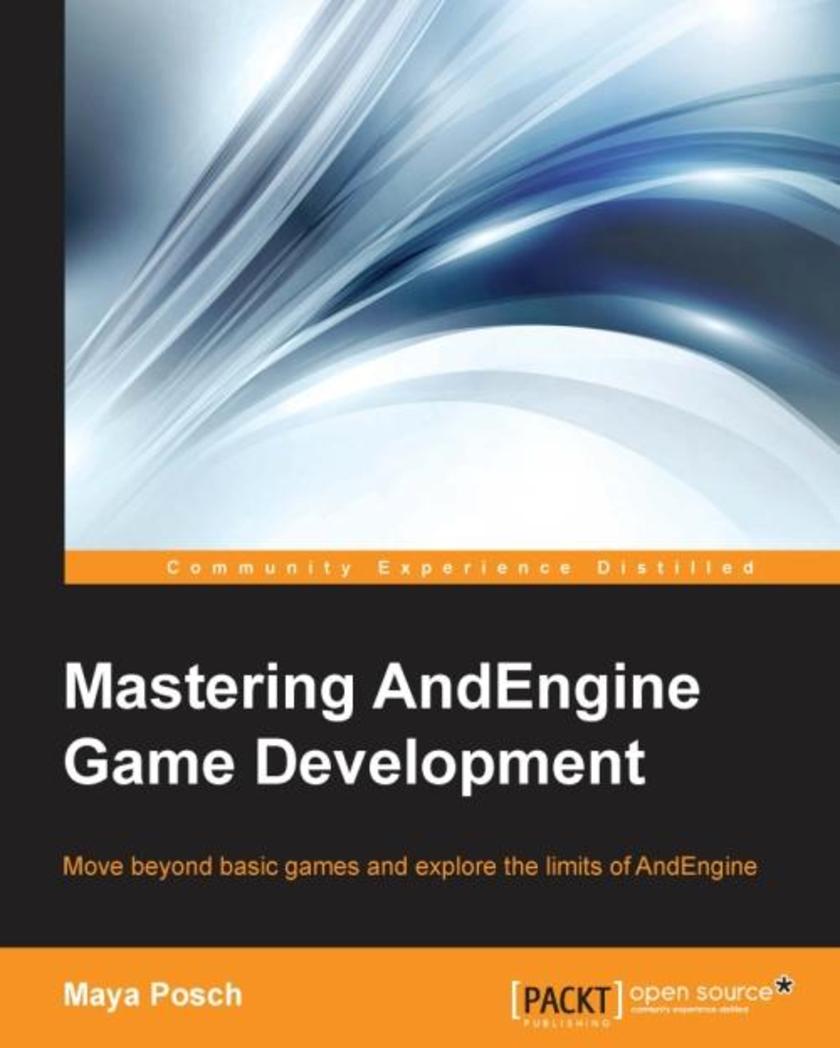
Mastering AndEngine Game Development
¥80.65
Move beyond basic games and explore the limits of AndEngine About This Book Extend the basic AndEngine features without modifying any of AndEngine's code Understand advanced technologies and gain the skills to create the ultimate games in AndEngine Theory supported with practical examples to stimulate your imagination and creativity Who This Book Is For This book is aimed at developers who have gone through all the basic AndEngine tutorials and books, and are looking for something more. It's also very suitable for developers with knowledge of other game engines who are looking to develop with AndEngine. Knowledge of Java, C++ and Android development are a prerequisite for getting the most out of this book. What You Will Learn Extend AndEngine to use and render 3D models Integrate and use various physics engines with AndEngine Advanced animations and their implementation in AndEngine Lighting theory and its application for both 2D and 3D objects Using skeletal animation with AndEngine Use GLSL shaders with AndEngine for effects and anti-aliasing Add sounds and effects to AndEngine using both basic and 3D audio libraries Efficient network implementations with AndEngine for multi-players In Detail AndEngine is a popular and easy-to-use game framework, best suited for Android game development. After learning the basics of creating an Android game using AndEngine it's time you move beyond the basics to explore further. For this you need to understand the theory behind many of the technologies AndEngine uses. This book aims to provide all the skills and tools you need to learn more about Android game development using AndEngine. With this book you will get a quick overview of the basics of AndEngine and Android application development. From there, you will learn how to use 3D models in a 2D scene, render a visual representation of a scene's objects, and create interaction between these objects. You will explore frame-based animations and learn to use skeletal animations. As the book progresses, you will be guided through exploring all the relevant aspects of rendering graphics with OpenGL ES, generating audio using OpenSL ES and OpenAL, making the best use of Android's network API, implementing anti-aliasing algorithms, shaders, dynamic lighting and much more. With all this, you will be ready to enhance the look and feel of your game with its user interface, sound effects and background music. After an in-depth study of 2D and 3D worlds and multi-player implementations, you will be a master in AndEngine and Android game development. Style and approach This book takes an in-depth tour of the many aspects of Android game development with the use of AndEngine. Each topic is covered extensively to act both as a practical guide as well as a reference.

Learning Dart - Second Edition
¥80.65
Learn to develop high performance applications with Dart 1.10 About This Book Develop apps for the modern web using Dart and HTML5 Clarify and shorten your Dart code using enums Build a complex UI for business applications with Dart's Polymer framework, based on web components Who This Book Is For If you want to become a developer for the modern web, or wish to add Dart to your tool belt, then this book is for you. The book assumes you have basic HTML experience and know how web applications work. Some previous programming experience, preferably in a modern language like C#, Java, Python, Ruby or JavaScript, will give you a head start. You can work with Dart on your preferred platform, be it Linux, Mac OS X or Windows. What You Will Learn Structure your code using functions, classes, generics, packages and libraries Use the power of modern browsers to process and store data Make games by drawing, and using audio and video in the browser Develop an application with a model-driven and spiral-paced approach Discover the Observatory tools for profiling memory and CPU usage of Dart programs Store your app's data in MySQL and MongoDB through Dart Build powerful HTML5 forms, validate and store data in local storage, and use web components to build your own user interface Run your Dart server on an App Engine Managed VM In Detail Dart is an open source programming language for the web, developed at Google, with a steadily growing community. It is a single language for both client and server, appropriate for the full range of devices on the web – including phones, tablets, laptops, and servers. It encompasses the lessons of the last two decades of web programming. This book will give you a thorough overview of Dart, taking you through its ecosystem, syntax, and development principles. With this book, you will build web games using HTML5, audio, and video, and also dive into processing and displaying data in HTML5 forms with Dart. You will also learn how web components fit together with HTML5, and how to apply them in business web applications of the future. You will discover how to store data on the client, communicate data between client and server with JSON, and store JSON data with MongoDB and MySQL. Stop solving new challenges with the same old tools – let Dart show you a whole new way. Style and approach This book provides you a project-based approach, with everything you need to start or enhance your career in the future of web development with Dart. It follows the spiral approach: each project builds up in successive spirals, adding new features in each step.

Unity Character Animation with Mecanim
¥90.46
A detailed guide to the complex new animation tools in Unity, packed with clear instructions and illustrated with original content in the context of a next generation zombie apocalypse adventure game About This Book Create and export models and animation sequences to Unity from 3ds max and Maya Prepare character models and animation for games using Mecanim’s rigging tools Retarget, adjust, and mix and match motion capture and other animation data Write and edit *s compatible with Mecanim Animation Controllers Who This Book Is For If you are a Unity developer looking to get to grips with the character animation specific tools, a 3D software user who is new to Unity, or a beginner game developer who is interested in character animation and interaction, this book is ideal for you. Some experience with either the Unity interface or basic 3D coordinates is recommended, but not required. What You Will Learn Learn how to prepare a rigged character model to receive animation within Unity Acquire efficient techniques to refine and optimize motion capture data Retarget animation sequences between different character rigs Discover how to rig a humanoid character and export for use in Unity Script character interaction for a First Person character model Create dynamic animation sequences from scratch using keyframe techniques, in a variety of 3D software packages Learn Project Management in Unity Understand how to set up a complex facial rig for speech Set up Animation Controllers with masked states and blend trees to create seamless and additive animation transitions Construct a ragdoll game object and instantiate it in a game Devise Mecanim animation integration for the player and AI driven animation for enemy characters In Detail Game animation for independent developers has taken a giant leap forward with Unity's Mecanim toolset, which streamlines the import/export, retargeting, and many other aspects of the character animation workflow. Unity Character Animation with Mecanim is a great primer for getting to know the nuts and bolts of Mecanim and other character animation related tools in Unity. It offers you step-by-step instructions for preparing and exporting rigged models and animation sequences from commonly used 3D packages, such as Maya, 3ds Max and Blender. This book explores the new set of animation tools introduced with Mecanim in Unity. Approaching its subject matter through a typical genre–a zombie action game, character animation techniques are explored using real examples of player input and interaction, enemy behavior, and other aspects of game dynamics. As the book progresses, the reader will understand how these elements fit together in a small game development workflow. We will begin with a demonstration of the process of getting a rigged character into Unity and setting it up to use provided animation sequences. We will also consider a few industry standard 3D packages and how these can be used to rig a humanoid character for use in Unity. We will demonstrate the retargeting capabilities of Mecanim’s Humanoid Animation type by adjusting motion sequences to fit disparate character types in our game. After this, we will look at Ragdoll physics and the implementation of this commonly used technique in a Mecanim workflow. The book culminates with a thorough dissection of the enemy character AI * incorporating the Mecanim elements detailed in the previous chapters. Unity Character Animation with Mecanim will provide you with a detailed exploration of the interaction between game development and character animation, and will broaden your understanding of the rich animation toolset within Unity. Style and approach A comprehensive guide, featuring step- by- step practical tutorials using sample assets, showing you how to build fully controllable characters and non-player characters/enemies.

The Dangerous Dandy
¥24.44
Left all but penniless by the death of her husband, Lady Maude Camberley is reduced to scraping a living through gambling and the generosity of Society gentlemen. So when the stupendously wealthy but conceited and cruel Prince Ahmadi of Kahriz offers her ten thousand pounds for the hand in marriage of her young beautiful daughter, Alyna, she accepts at once. Poor Alyna is utterly mortified and horrified as she finds the Prince utterly repulsive and could bear it if he touched her. Her mother will not listen to her pleas as she is frantic for the money the Prince has offered her. Alyna is so desperate that she is on the verge of suicide when a handsome Good Samaritan dissuades her on the bank of the River Thames. He is the handsome and debonair Lord Dorrington, who is instantly struck by Alyna’s plight and he then sets about protecting her from the evil Prince’s clutches. Alynda is adamant that she hates all men and will never marry, but gradually the noble good looks and gentle humour of Lord Dorrington helps to change her mind. And just as she realises that she is in love, the dastardly Prince reappears bent on revenge and she fears desperately for the life of her newfound love.
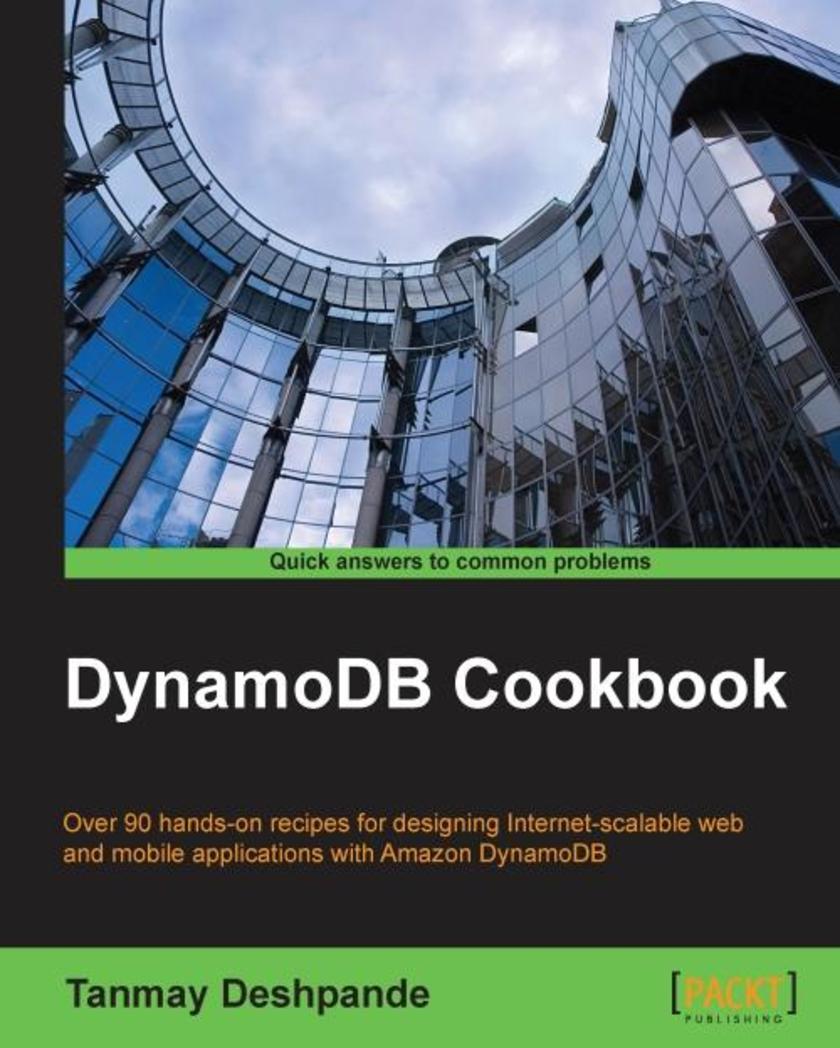
DynamoDB Cookbook
¥63.21
Over 90 hands-on recipes to design Internet scalable web and mobile applications with Amazon DynamoDB About This Book Construct top-notch mobile and web applications with the Internet scalable NoSQL database and host it on cloud Integrate your applications with other AWS services like AWS EMR, AWS S3, AWS Redshift, and AWS CloudSearch etc. in order to achieve a one-stop application stack Step-by-step implementation guide that provides real-world use with hands-on recipes Who This Book Is For This book is intended for those who have a basic understanding of AWS services and want to take their knowledge to the next level by getting their hands dirty with coding recipes in DynamoDB. What You Will Learn Design DynamoDB tables to achieve high read and write throughput Discover best practices like caching, exponential back-offs and auto-retries, storing large items in AWS S3, storing compressed data etc. Effectively use DynamoDB Local in order to make your development smooth and cost effective Implement cost effective best practices to reduce the burden of DynamoDB charges Create and maintain secondary indexes to support improved data access Integrate various other AWS services like AWS EMR, AWS CloudSearch, AWS Pipeline etc. with DynamoDB In Detail AWS DynamoDB is an excellent example of a production-ready NoSQL database. In recent years, DynamoDB has been able to attract many customers because of its features like high-availability, reliability and infinite scalability. DynamoDB can be easily integrated with massive data crunching tools like Hadoop /EMR, which is an essential part of this data-driven world and hence it is widely accepted. The cost and time-efficient design makes DynamoDB stand out amongst its peers. The design of DynamoDB is so neat and clean that it has inspired many NoSQL databases to simply follow it. This book will get your hands on some engineering best practices DynamoDB engineers use, which can be used in your day-to-day life to build robust and scalable applications. You will start by operating with DynamoDB tables and learn to manipulate items and manage indexes. You will also discover how to easily integrate applications with other AWS services like EMR, S3, CloudSearch, RedShift etc. A couple of chapters talk in detail about how to use DynamoDB as a backend database and hosting it on AWS ElasticBean. This book will also focus on security measures of DynamoDB as well by providing techniques on data encryption, masking etc. By the end of the book you’ll be adroit in designing web and mobile applications using DynamoDB and host it on cloud. Style and approach An easy-to-follow guide, full of real-world examples, which takes you through the world of DynamoDB following a step-by-step, problem-solution based approach.
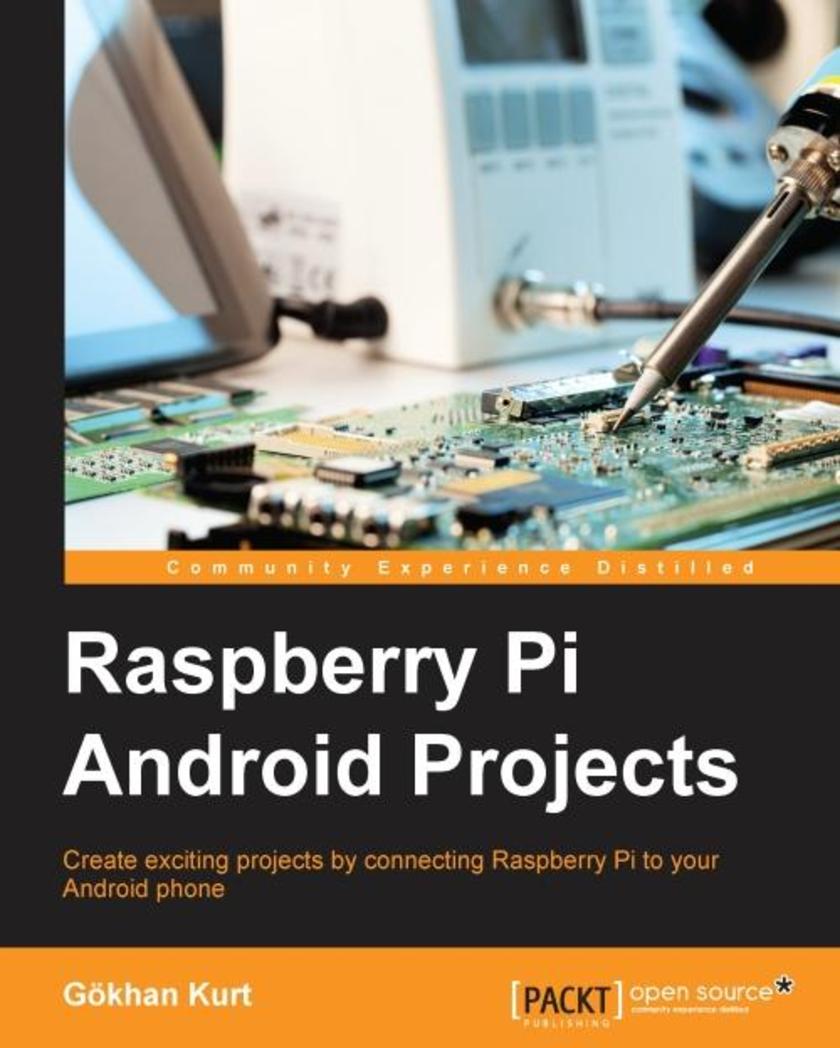
Raspberry Pi Android Projects
¥63.21
Create exciting projects by connecting the Raspberry Pi to your Android phone About This Book Manage most of the fundamental functions of Raspberry Pi from your Android phone Use the projects created in this book to develop even more exciting projects in the future A project-based learning experience to help you discover amazing ways to combine the power of Android and Raspberry Pi Who This Book Is For The target audience for this book includes Raspberry Pi enthusiasts, hobbyists, and anyone who wants to create engaging projects with Android OS. Some knowledge of Android programming would be helpful. What You Will Learn Install the tools required on your Pi and Android to manage and administer the Pi from Android Share your files between different Android devices using the Pi as a server Set up the Pi to live-stream the camera in surveillance mode and customize Android to receive this content Turn your Pi into a media center and control it from your Android See your Android display on a large screen using Raspberry Pi Connect your car's dashboard to your Android device using Raspberry Pi In Detail Raspberry Pi is the credit card-sized, general purpose computer which has revolutionized portable technology. Android is an operating system that widely used in mobile phones today both on the high and low ends of the mobile phone market. However, there is little information about how to connect the two in spite of how popular both of them are. Raspberry Pi Android Projects starts with simple projects that help you access the command prompt and the desktop environment of Raspberry Pi from the comfort of your Android phone or tablet. Then, you will be introduced to more complex projects that combine the strengths of the Pi and Android in amazing ways. These projects will teach you how to manage services on the Pi from Android, share files between Android devices using the Pi as a server, administer and view the Pi’s camera from Android in surveillance mode, and connect your car to the Pi and make data more accessible using Android. The introductory projects covered will be useful each time you need to access or administer your Pi for other purposes, and the more advanced projects will continue to be valuable even after you become an expert on Pi. By the end of this book, you will be able to create engaging and useful projects that will help you combine the powers of both Android and Raspberry Pi. Style and approach A quick and easy-to-follow guide that will show how you can add up the power of Pi and Android by combining them.
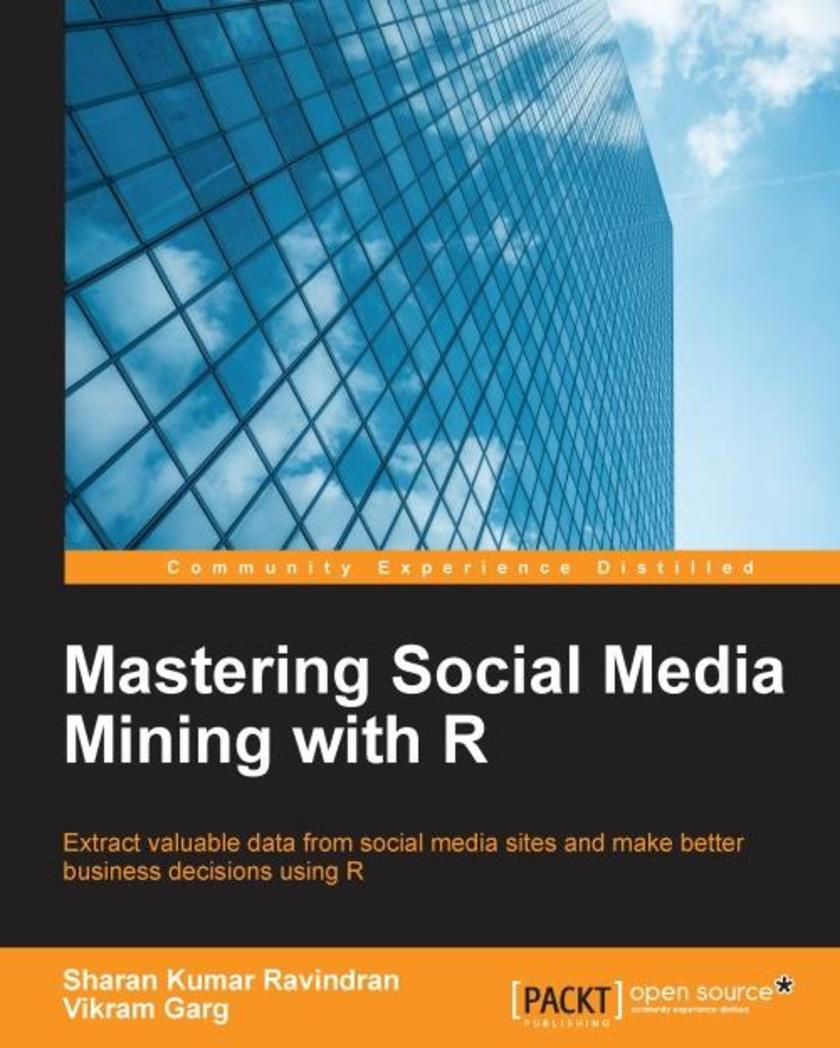
Mastering Social Media Mining with R
¥63.21
Extract valuable data from your social media sites and make better business decisions using R About This Book Explore the social media APIs in R to capture data and tame it Employ the machine learning capabilities of R to gain optimal business value A hands-on guide with real-world examples to help you take advantage of the vast opportunities that come with social media data Who This Book Is For If you have basic knowledge of R in terms of its libraries and are aware of different machine learning techniques, this book is for you. Those with experience in data analysis who are interested in mining social media data will find this book useful. What You Will Learn Access APIs of popular social media sites and extract data Perform sentiment analysis and identify trending topics Measure CTR performance for social media campaigns Implement exploratory data analysis and correlation analysis Build a logistic regression model to detect spam messages Construct clusters of pictures using the K-means algorithm and identify popular personalities and destinations Develop recommendation systems using Collaborative Filtering and the Apriori algorithm In Detail With an increase in the number of users on the web, the content generated has increased substantially, bringing in the need to gain insights into the untapped gold mine that is social media data. For computational statistics, R has an advantage over other languages in providing readily-available data extraction and transformation packages, making it easier to carry out your ETL tasks. Along with this, its data visualization packages help users get a better understanding of the underlying data distributions while its range of "standard" statistical packages simplify analysis of the data. This book will teach you how powerful business cases are solved by applying machine learning techniques on social media data. You will learn about important and recent developments in the field of social media, along with a few advanced topics such as Open Authorization (OAuth). Through practical examples, you will access data from R using APIs of various social media sites such as Twitter, Facebook, Instagram, GitHub, Foursquare, LinkedIn, Blogger, and other networks. We will provide you with detailed explanations on the implementation of various use cases using R programming. With this handy guide, you will be ready to embark on your journey as an independent social media analyst. Style and approach This easy-to-follow guide is packed with hands-on, step-by-step examples that will enable you to convert your real-world social media data into useful, practical information.
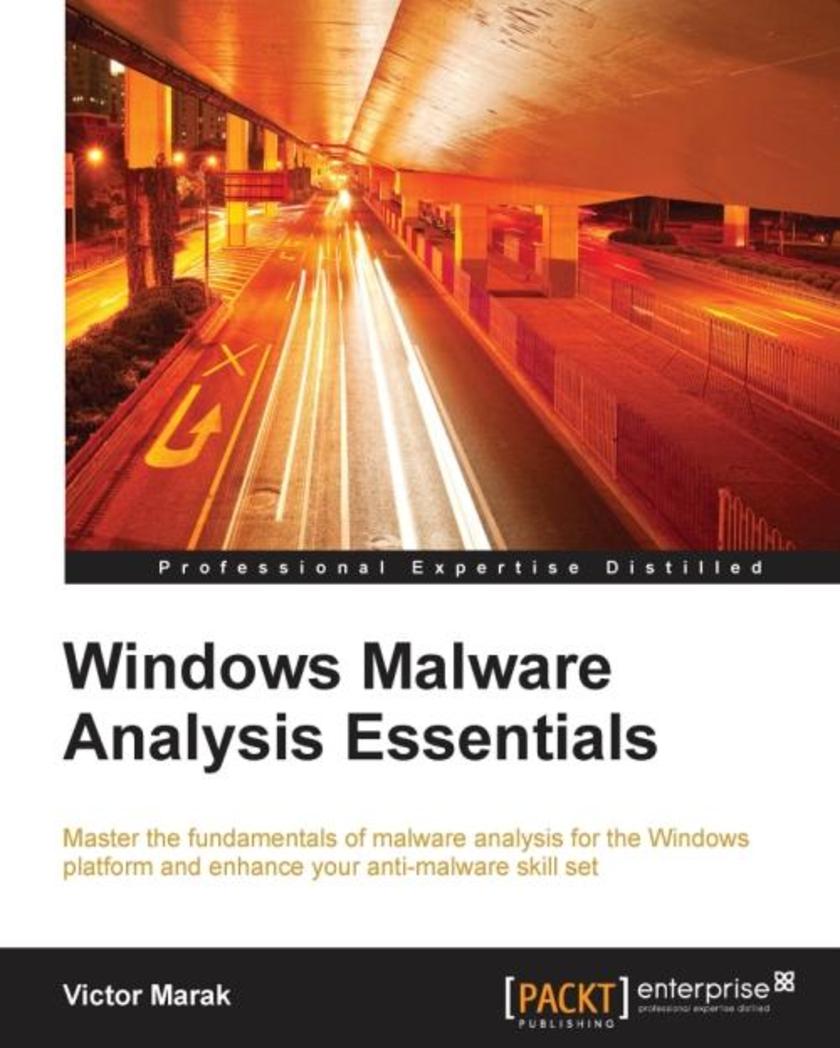
Windows Malware Analysis Essentials
¥90.46
Master the fundamentals of malware analysis for the Windows platform and enhance your anti-malware skill set About This Book Set the baseline towards performing malware analysis on the Windows platform and how to use the tools required to deal with malware Understand how to decipher x86 assembly code from source code inside your favourite development environment A step-by-step based guide that reveals malware analysis from an industry insider and demystifies the process Who This Book Is For This book is best for someone who has prior experience with reverse engineering Windows executables and wants to specialize in malware analysis. The book presents the malware analysis thought process using a show-and-tell approach, and the examples included will give any analyst confidence in how to approach this task on their own the next time around. What You Will Learn Use the positional number system for clear conception of Boolean algebra, that applies to malware research purposes Get introduced to static and dynamic analysis methodologies and build your own malware lab Analyse destructive malware samples from the real world (ITW) from fingerprinting and static/dynamic analysis to the final debrief Understand different modes of linking and how to compile your own libraries from assembly code and integrate the codein your final program Get to know about the various emulators, debuggers and their features, and sandboxes and set them up effectively depending on the required scenario Deal with other malware vectors such as pdf and MS-Office based malware as well as *s and shellcode In Detail Windows OS is the most used operating system in the world and hence is targeted by malware writers. There are strong ramifications if things go awry. Things will go wrong if they can, and hence we see a salvo of attacks that have continued to disrupt the normal scheme of things in our day to day lives. This book will guide you on how to use essential tools such as debuggers, disassemblers, and sandboxes to dissect malware samples. It will expose your innards and then build a report of their indicators of compromise along with detection rule sets that will enable you to help contain the outbreak when faced with such a situation. We will start with the basics of computing fundamentals such as number systems and Boolean algebra. Further, you'll learn about x86 assembly programming and its integration with high level languages such as C++.You'll understand how to decipher disassembly code obtained from the compiled source code and map it back to its original design goals. By delving into end to end analysis with real-world malware samples to solidify your understanding, you'll sharpen your technique of handling destructive malware binaries and vector mechanisms. You will also be encouraged to consider analysis lab safety measures so that there is no infection in the process. Finally, we'll have a rounded tour of various emulations, sandboxing, and debugging options so that you know what is at your disposal when you need a specific kind of weapon in order to nullify the malware. Style and approach An easy to follow, hands-on guide with de*ions and screenshots that will help you execute effective malicious software investigations and conjure up solutions creatively and confidently.
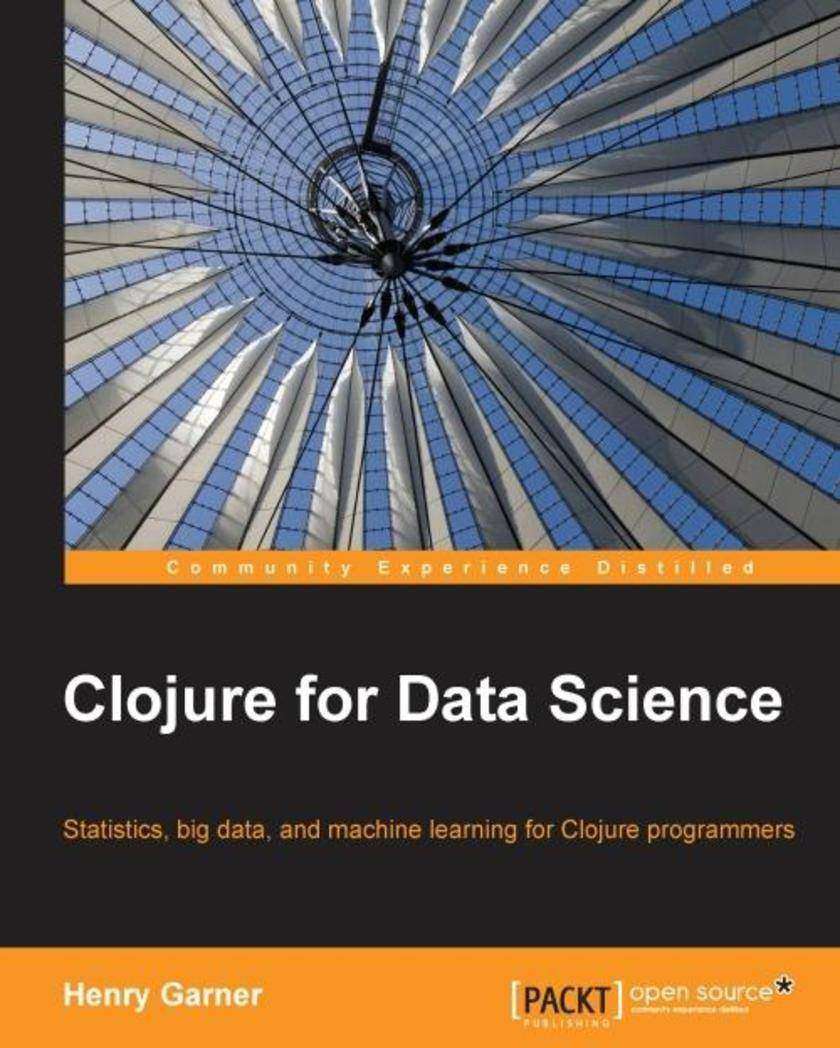
Clojure for Data Science
¥80.65
Statistics, big data, and machine learning for Clojure programmers About This Book Write code using Clojure to harness the power of your data Discover the libraries and frameworks that will help you succeed A practical guide to understanding how the Clojure programming language can be used to derive insights from data Who This Book Is For This book is aimed at developers who are already productive in Clojure but who are overwhelmed by the breadth and depth of understanding required to be effective in the field of data science. Whether you’re tasked with delivering a specific analytics project or simply suspect that you could be deriving more value from your data, this book will inspire you with the opportunities–and inform you of the risks–that exist in data of all shapes and sizes. What You Will Learn Perform hypothesis testing and understand feature selection and statistical significance to interpret your results with confidence Implement the core machine learning techniques of regression, classification, clustering and recommendation Understand the importance of the value of simple statistics and distributions in exploratory data analysis Scale algorithms to web-sized datasets efficiently using distributed programming models on Hadoop and Spark Apply suitable analytic approaches for text, graph, and time series data Interpret the terminology that you will encounter in technical papers Import libraries from other JVM languages such as Java and Scala Communicate your findings clearly and convincingly to nontechnical colleagues In Detail The term “data science” has been widely used to define this new profession that is expected to interpret vast datasets and translate them to improved decision-making and performance. Clojure is a powerful language that combines the interactivity of a *ing language with the speed of a compiled language. Together with its rich ecosystem of native libraries and an extremely simple and consistent functional approach to data manipulation, which maps closely to mathematical formula, it is an ideal, practical, and flexible language to meet a data scientist’s diverse needs. Taking you on a journey from simple summary statistics to sophisticated machine learning algorithms, this book shows how the Clojure programming language can be used to derive insights from data. Data scientists often forge a novel path, and you’ll see how to make use of Clojure’s Java interoperability capabilities to access libraries such as Mahout and Mllib for which Clojure wrappers don’t yet exist. Even seasoned Clojure developers will develop a deeper appreciation for their language’s flexibility! You’ll learn how to apply statistical thinking to your own data and use Clojure to explore, analyze, and visualize it in a technically and statistically robust way. You can also use Incanter for local data processing and ClojureScript to present interactive visualisations and understand how distributed platforms such as Hadoop sand Spark’s MapReduce and GraphX’s BSP solve the challenges of data analysis at scale, and how to explain algorithms using those programming models. Above all, by following the explanations in this book, you’ll learn not just how to be effective using the current state-of-the-art methods in data science, but why such methods work so that you can continue to be productive as the field evolves into the future. Style and approach This is a practical guide to data science that teaches theory by example through the libraries and frameworks accessible from the Clojure programming language.

PhoneGap Essentials
¥54.49
Use PhoneGap to build cross-platform mobile applications quickly and efficiently About This Book Build native mobile phone applications with HTML5, JavaScript, and CSS Incorporate smartphone capabilities such as GPS, camera, accelerometer, and more into your apps for any mobile platform Use Cordova view to embed PhoneGap into native applications to either transit smoothly to PhoneGap or incorporate PhoneGap functionalities Who This Book Is For If you are a mobile application developer in iOS or Android, or a web application developer who wants to learn how to make cross-platform mobile applications using PhoneGap, this book is perfect for you. To make the most of this book, it will be helpful if you have prior knowledge of HTML5, CSS, and JavaScript. What You Will Learn Get to grips with the fundamentals of PhoneGap to get started Set up a development environment for Linux, Mac OS, and Windows Use Cordova CLI, workflows, and Plugman Plugin manager to create mobile applications efficiently Understand the development workflow to create native cross-platform mobile applications Embed plugin support to transition to PhoneGap or use it to enhance existing applications Improve your mobile development knowledge using object-oriented programming (OOP), reusable components, and AJAX closures Be empowered to build your own mobile apps quickly with ease Discover tips and tricks to make app development fun and easy In Detail PhoneGap is an open source framework that allows you to quickly build cross-platform mobile apps using HTML5, JavaScript, and CSS. PhoneGap Build is a cloud service that allows you to quickly develop and compile mobile applications without SDKs, compilers, and hardware. PhoneGap allows you to use its existing plugins or create new ones, as per your requirements, to enhance your mobile applications. Starting by installing PhoneGap, you’ll develop an app that uses various device capabilities through different plugins and learn how to build an app in the cloud with PhoneGap’s Build service. You’ll discover how to use PhoneGap to create an application view, along with how to use a camera, geolocation, and other device capabilities to create engaging apps. Next, you’ll augment applications with PhoneGap's plugins using minimalistic code. You’ll explore the app preparation process to deploy your app to the app store. By the end of the book, you’ll have also learned how to apply hybrid mobile UIs that will work across different platforms and different screen sizes for better user experience. Style and approach This is an example-based, fast-paced guide that covers the fundamentals of creating cross-platform mobile applications with PhoneGap.
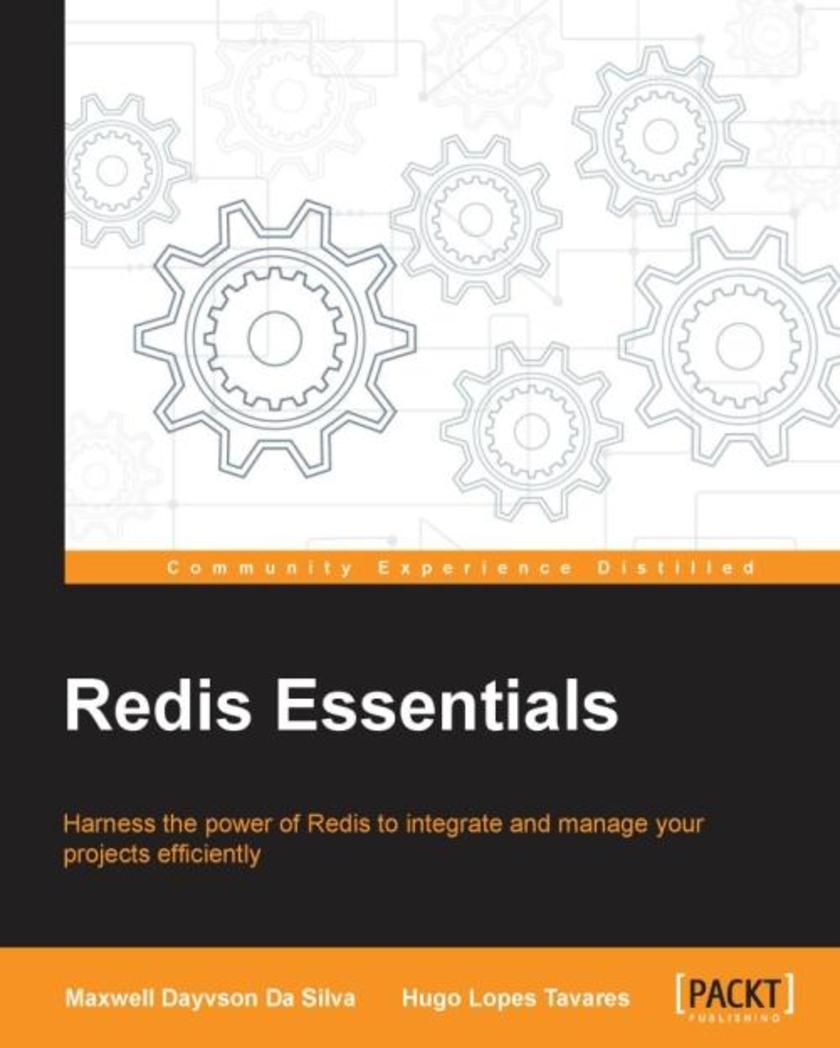
Redis Essentials
¥71.93
Harness the power of Redis to integrate and manage your projects efficiently About This Book Learn how to use Redis's data types efficiently to manage large data sets Scale Redis to multiple servers with Twemproxy, Redis Sentinel, and Redis Cluster A fast-paced guide, full of real-world examples to help you get the best out of the features offered by Redis Who This Book Is For If you are a competent developer with experience of working with data structure servers and want to boost your project's performance by learning about features of Redis, then this book is for you. What You Will Learn Build analytics applications using Bitmaps and Hyperloglogs Enhance scalability with Twemproxy, Redis Sentinel, and Redis Cluster Build a Time Series implementation in Node.js and Redis Create your own Redis commands by extending Redis with Lua Get to know security techniques to protect your data (SSL encryption, firewall rules, basic authorization) Persist data to disk and learn the trade-offs of AOF and RDB Understand how to use Node.js, PHP, Python, and Ruby clients for Redis Avoid common pitfalls when designing your next solution In Detail Redis is the most popular in-memory key-value data store. It’s very lightweight and its data types give it an edge over the other competitors. If you need an in-memory database or a high-performance cache system that is simple to use and highly scalable, Redis is what you need. Redis Essentials is a fast-paced guide that teaches the fundamentals on data types, explains how to manage data through commands, and shares experiences from big players in the industry. We start off by explaining the basics of Redis followed by the various data types such as Strings, hashes, lists, and more. Next, Common pitfalls for various scenarios are described, followed by solutions to ensure you do not fall into common traps. After this, major differences between client implementations in PHP, Python, and Ruby are presented. Next, you will learn how to extend Redis with Lua, get to know security techniques such as basic authorization, firewall rules, and SSL encryption, and discover how to use Twemproxy, Redis Sentinel, and Redis Cluster to scale infrastructures horizontally. At the end of this book, you will be able to utilize all the essential features of Redis to optimize your project's performance. Style and approach A practical guide that offers the foundation upon which you can begin to understand the capabilities of Redis using a step-by-step approach. This book is full of real-world problems and in-depth knowledge of the concepts and features of Redis, with plenty of examples.

Apache Spark Graph Processing
¥63.21
Build, process and analyze large-scale graph data effectively with Spark About This Book Find solutions for every stage of data processing from loading and transforming graph data to Improve the scalability of your graphs with a variety of real-world applications with complete Scala code. A concise guide to processing large-scale networks with Apache Spark. Who This Book Is For This book is for data scientists and big data developers who want to learn the processing and analyzing graph datasets at scale. Basic programming experience with Scala is assumed. Basic knowledge of Spark is assumed. What You Will Learn Write, build and deploy Spark applications with the Scala Build Tool. Build and analyze large-scale network datasets Analyze and transform graphs using RDD and graph-specific operations Implement new custom graph operations tailored to specific needs. Develop iterative and efficient graph algorithms using message aggregation and Pregel abstraction Extract subgraphs and use it to discover common clusters Analyze graph data and solve various data science problems using real-world datasets. In Detail Apache Spark is the next standard of open-source cluster-computing engine for processing big data. Many practical computing problems concern large graphs, like the Web graph and various social networks. The scale of these graphs - in some cases billions of vertices, trillions of edges - poses challenges to their efficient processing. Apache Spark GraphX API combines the advantages of both data-parallel and graph-parallel systems by efficiently expressing graph computation within the Spark data-parallel framework. This book will teach the user to do graphical programming in Apache Spark, apart from an explanation of the entire process of graphical data analysis. You will journey through the creation of graphs, its uses, its exploration and analysis and finally will also cover the conversion of graph elements into graph structures. This book begins with an introduction of the Spark system, its libraries and the Scala Build Tool. Using a hands-on approach, this book will quickly teach you how to install and leverage Spark interactively on the command line and in a standalone Scala program. Then, it presents all the methods for building Spark graphs using illustrative network datasets. Next, it will walk you through the process of exploring, visualizing and analyzing different network characteristics. This book will also teach you how to transform raw datasets into a usable form. In addition, you will learn powerful operations that can be used to transform graph elements and graph structures. Furthermore, this book also teaches how to create custom graph operations that are tailored for specific needs with efficiency in mind. The later chapters of this book cover more advanced topics such as clustering graphs, implementing graph-parallel iterative algorithms and learning methods from graph data. Style and approach A step-by-step guide that will walk you through the key ideas and techniques for processing big graph data at scale, with practical examples that will ensure an overall understanding of the concepts of Spark.
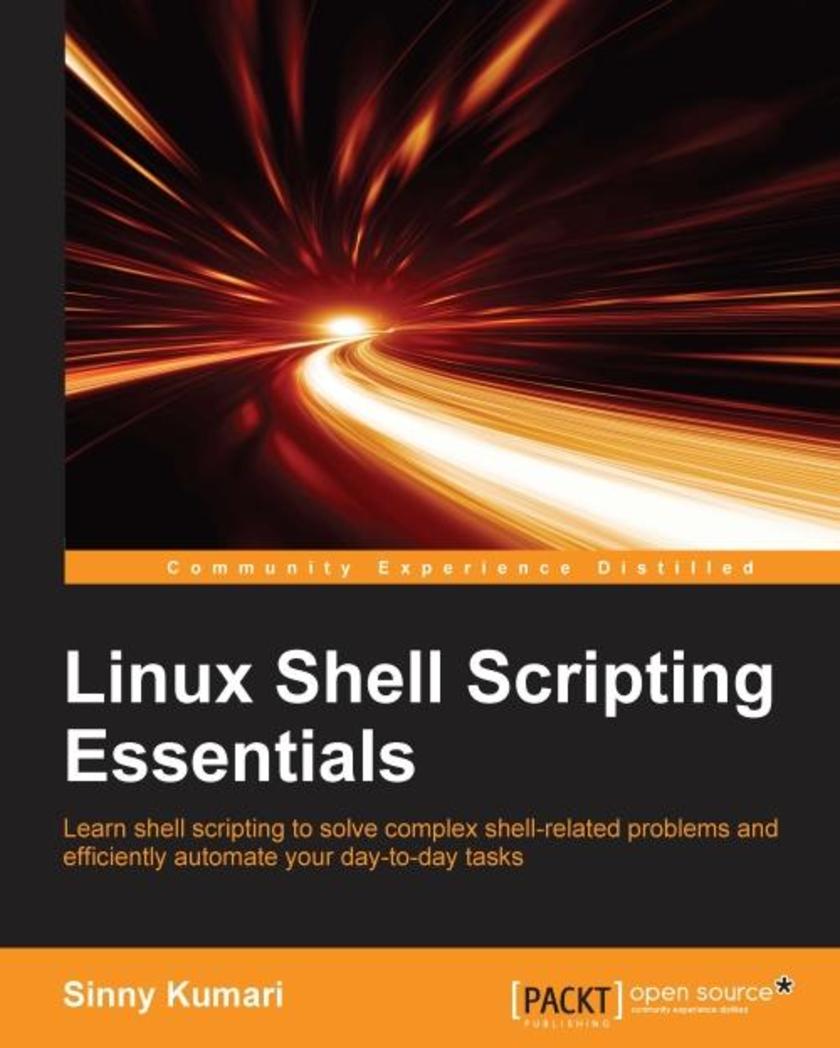
Linux Shell Scripting Essentials
¥90.46
Learn shell *ing to solve complex shell-related problems and to efficiently automate your day-to-day tasks About This Book Familiarize yourself with the terminal by learning about powerful shell features Automate tasks by writing shell *s for repetitive work Packed with easy-to-follow, hands-on examples to help you write any type of shell * with confidence Who This Book Is For This book is aimed at administrators and those who have a basic knowledge of shell *ing and who want to learn how to get the most out of writing shell *s. What You Will Learn Write effective shell *s easily Perform search operations and manipulate large text data with a single shell command Modularize reusable shell *s by creating shell libraries Redirect input, output, and errors of a command or * execution to other streams Debug code with different shell debugging techniques to make your *s bug-free Manage processes, along with the environment variables needed to execute them properly Execute and embed other languages in your *s Manage creation, deletion, and search operations in files In Detail Shell *ing is a quick method to prototype complex applications or problems. Shell *s are a collection of commands to automate tasks, usually those for which the user has a repeated need, when working on Linux-based systems. Using simple commands or a combination of them in a shell can solve complex problems easily. This book starts with the basics, including essential commands that can be executed on Linux systems to perform tasks within a few nanoseconds. You’ll learn to use outputs from commands and transform them to show the data you require. Discover how to write shell *s easily, execute * files, debug, and handle errors. Next, you’ll explore environment variables in shell programming and learn how to customize them and add a new environment. Finally, the book walks you through processes and how these interact with your shell *s, along with how to use *s to automate tasks and how to embed other languages and execute them. Style and approach This book is a pragmatic guide to writing efficient shell programs, complete with hands-on examples and tips.
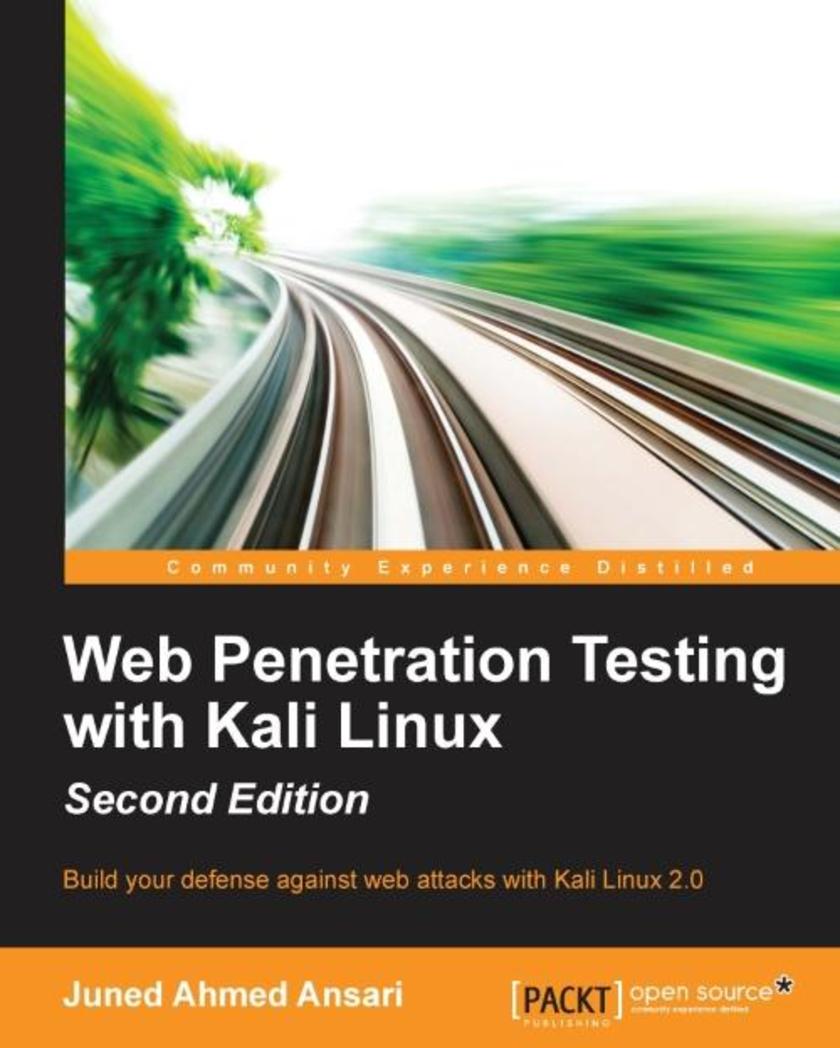
Web Penetration Testing with Kali Linux - Second Edition
¥90.46
Build your defense against web attacks with Kali Linux 2.0 About This Book Gain a deep understanding of the flaws in web applications and exploit them in a practical manner Get hands-on web application hacking experience with a range of tools in Kali Linux 2.0 Develop the practical skills required to master multiple tools in the Kali Linux 2.0 toolkit Who This Book Is For If you are already working as a network penetration tester and want to expand your knowledge of web application hacking, then this book tailored for you. Those who are interested in learning more about the Kali Sana tools that are used to test web applications will find this book a thoroughly useful and interesting guide. What You Will Learn Set up your lab with Kali Linux 2.0 Identify the difference between hacking a web application and network hacking Understand the different techniques used to identify the flavor of web applications Expose vulnerabilities present in web servers and their applications using server-side attacks Use SQL and cross-site *ing (XSS) attacks Check for XSS flaws using the burp suite proxy Find out about the mitigation techniques used to negate the effects of the Injection and Blind SQL attacks In Detail Kali Linux 2.0 is the new generation of the industry-leading BackTrack Linux penetration testing and security auditing Linux distribution. It contains several hundred tools aimed at various information security tasks such as penetration testing, forensics, and reverse engineering. At the beginning of the book, you will be introduced to the concepts of hacking and penetration testing and will get to know about the tools used in Kali Linux 2.0 that relate to web application hacking. Then, you will gain a deep understanding of SQL and command injection flaws and ways to exploit the flaws. Moving on, you will get to know more about *ing and input validation flaws, AJAX, and the security issues related to AJAX. At the end of the book, you will use an automated technique called fuzzing to be able to identify flaws in a web application. Finally, you will understand the web application vulnerabilities and the ways in which they can be exploited using the tools in Kali Linux 2.0. Style and approach This step-by-step guide covers each topic with detailed practical examples. Every concept is explained with the help of illustrations using the tools available in Kali Linux 2.0.
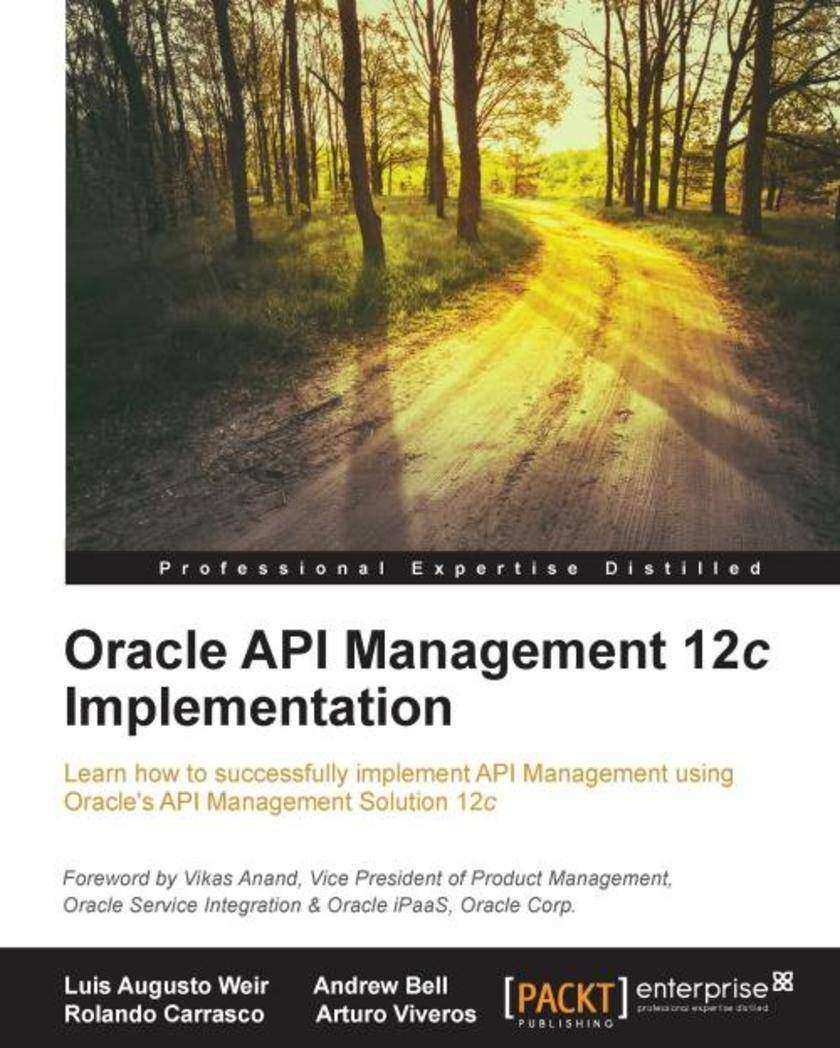
Oracle API Management 12c Implementation
¥107.90
Learn how to successfully implement API management using Oracle’s API Management Solution 12c About This Book Explore the key concepts, goals, and objectives of API Management and learn how to implement it using the Oracle API Management Solution Understand the concepts and objectives of the Application Service Governance (ASG), along with the governance framework that encompasses people, processes, and technology Get to grips with API Management readiness assessments, gap analysis, digital reference architecture, and implementation roadmaps Who This Book Is For This book is for Enterprise Architects, Solution Architects, Technical Architects, and SOA and API consultants who want to successfully implement API Management using the Oracle API Management Solution products. What You Will Learn Understand how to manage a set of APIs Discover the differences and similarities between API Management and SOA Governance, and where and how these two disciplines converge into Application Services Governance (ASG) Grasp information about ASG and how to define an ASG governance framework Understand the challenges for organizations looking to expose APIs to the external world. Identify common scenarios and how to solve them Define an Oracle API management deployment topology Install and configure Oracle API Catalog (OAC), Oracle API Manager (OAPIM), and Oracle API Gateway (OAG) Learn about API sub*ions and API community management with the OAPIM portal Implement Oracle API Manager (OAPIM) including creation, publishing, management and deprecation of APIs In Detail Oracle SOA Governance is a comprehensive, service-orientated governance solution that is designed to make the transition to SOA easier. API management is the discipline that governs the software development lifecycle of APIs. It defines the tools and processes needed to build, publish and operate APIs including the management of the community of developers around it. This book illustrates how to successfully implement API Management in your organization. To achieve this, the importance of defining an API management strategy and implementation roadmap so that capabilities are implemented in the right order and timeframes is described. It starts by describing all of the fundamental concepts around API Management and related disciplines such as SOA Governance and DevOps in order to dispel the confusion surrounding these topics. The book then takes you on the journey of implementing API Management, using a realistic case study of an organization that needs an API Management solution. You will start by identifying the key business drivers to implement APIs and then create an API Management strategy and a roadmap to realize this strategy. You’ll then go through a number of use cases, each focused on addressing specific business requirements. These will help you understand each of the Oracle API Management products, how they fit into an overall architecture, and how to implement them. The book concludes by providing some tips and guidelines around defining a deployment topology for the Oracle API Management products and the steps to install them. Style and approach This book is a comprehensive guide to successfully implementing a complete API Management solution from inception to implementation. The initial chapters introduce you to Oracle SOA Governance and API Management and from there, chapters are mainly hands-on and provide a full step-by-step walkthrough of how to implement the products of the Oracle API management solution to address realistic use cases.
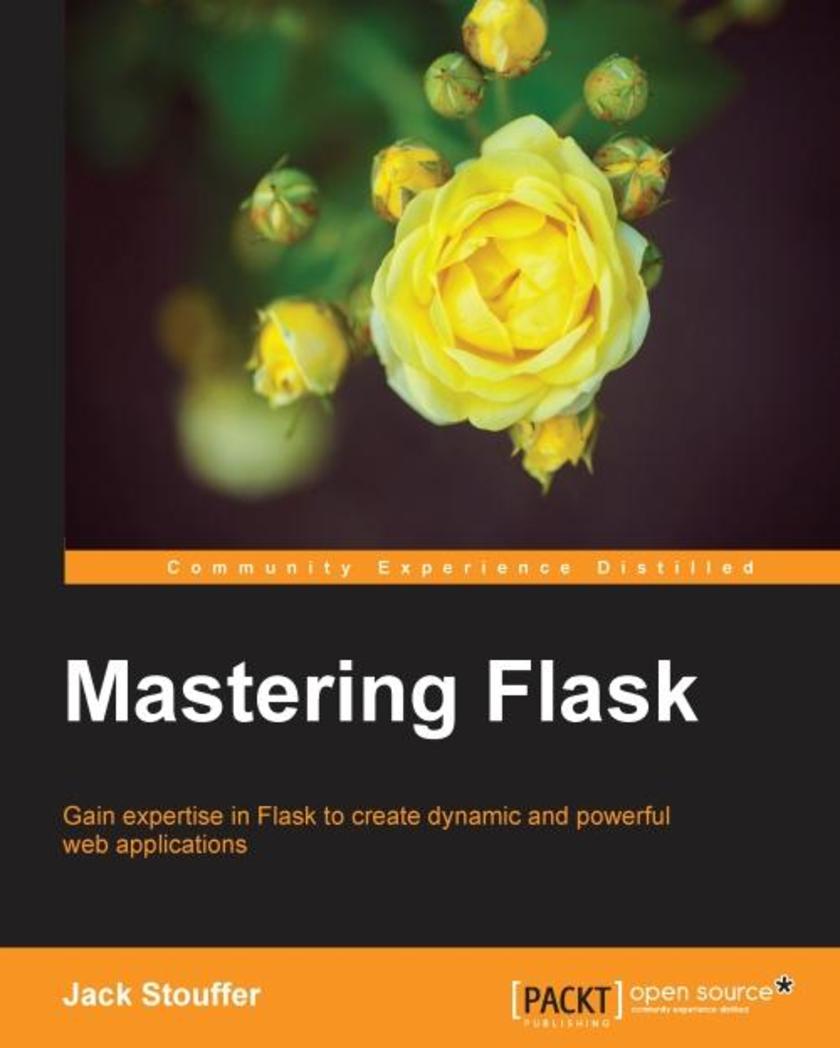
Mastering Flask
¥90.46
Gain expertise in Flask to create dynamic and powerful web applications About This Book Work with scalable Flask application structures to create complex web apps Discover the most powerful Flask extensions and learn how to create one Deploy your application to real-world platforms using this step-by-step guide Who This Book Is For If you are a Flask user who knows the basics of the library and how to create basic web pages with HTML and CSS, and you want to take your applications to the next level, this is the book for you. Harnessing the full power of Flask will allow you to create complex web applications with ease. What You Will Learn Set up a best practices Python environment Use SQLAlchemy to programmatically query a database Develop templates in Jinja Set up an MVC environment for Flask Discover NoSQL, when to use it, when not to, and how to use it Develop a custom Flask extension Use Celery to create asynchronous tasks In Detail Flask is a library that allows programmers to create web applications in Python. Flask is a micro-framework that boasts a low learning curve, a large community, and the power to create complex web apps. However, Flask is easy to learn but difficult to master. Starting from a simple Flask app, this book will walk through advanced topics while providing practical examples of the lessons learned. After building a simple Flask app, a proper app structure is demonstrated by transforming the app to use a Model-View-Controller (MVC) architecture. With a scalable structure in hand, the next chapters use Flask extensions to provide extra functionality to the app, including user login and registration, NoSQL querying, a REST API, an admin interface, and more. Next, you’ll discover how to use unit testing to take the guesswork away from making sure the code is performing as it should. The book closes with a discussion of the different platforms that are available to deploy a Flask app on, the pros and cons of each one, and how to deploy on each one. Style and approach With plenty of useful examples, this guide introduces new concepts and then shows you how those concepts can be used in a real-world environment. Most sections are based around a single example app that is developed throughout the book.
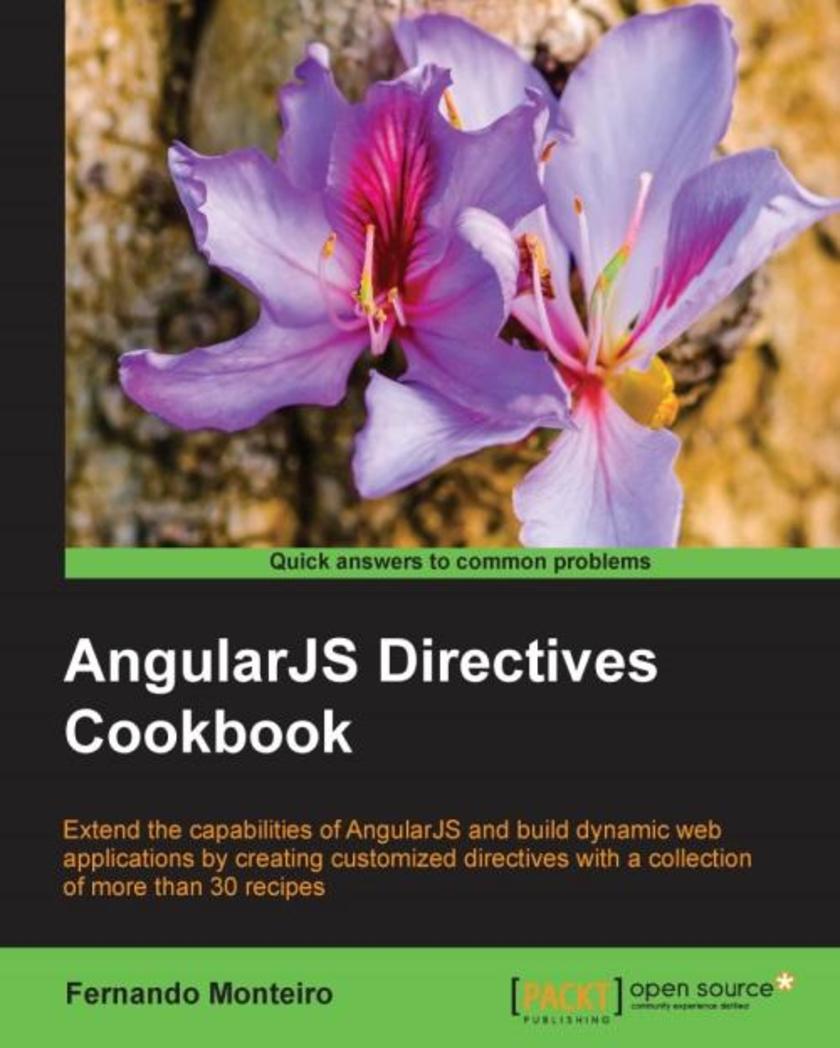
AngularJS Directives Cookbook
¥71.93
Extend the capabilities of AngularJS and build dynamic web applications by creating customized directives with this selection of more than 30 recipes About This Book Learn how to extend HTML templates in new ways to build even better web applications with exceptional interface components Build reusable directives for large-scale AngularJS applications Create even sophisticated and impressive modern web apps with ease Who This Book Is For This book is for developers with AngularJS experience who want to extend their knowledge to create or customize directives in any type of AngularJS application. Some experience of modern tools such as Yeoman and Bower would be helpful, but is not a requirement. What You Will Learn Build and customize external HTML templates, and create simple, effective directives for common interface components Learn how to use Controller function and any Bootstrap UI directives to manipulate the DOM and how to transform any UI library into AngularJS directives Construct an AngularJS application to use shared components and validate your HTML5 Discover how to use jQuery events and manipulate the DOM using jQuery UI inside AngularJS applications Create custom directives for ongoing projects using Yeoman generators, and find out how to implement standalone directives Build reusable directives for Large AngularJS applications and extend directives to use dynamic templates Write unit test for directives using the Karma runner and Jasmine’s behavior-driven development framework In Detail AngularJS directives are at the center of what makes it such an exciting – and important - web development framework. With directives, you can take greater control over HTML elements on your web pages – they ‘direct’ Angular’s HTML compiler to behave in the way you want it to. It makes building modern web applications a much more expressive experience, and allows you to focus more closely on improving the way that user interaction impacts the DOM and the way your app manages data. If you’re already using Angular, you probably recognize the power of directives to transform the way you understand and build your projects – but customizing and creating your own directives to harness AngularJS to its full potential can be more challenging. This cookbook shows you how to do just that – it’s a valuable resource that demonstrates how to use directives at every stage in the workflow. Packed with an extensive range of solutions and tips that AngularJS developers shouldn’t do without, you’ll find out how to make the most of directives. You’ll find recipes demonstrating how to build a number of different user interface components with directives, so you can take complete control over how users interact with your application. You’ll also learn how directives can simplify the way you work by creating reusable directives – by customizing them with Yeoman you can be confident that you’re application has the robust architecture that forms the bedrock of the best user experiences. You’ll also find recipes that will help you learn how to unit test directives, so you can be confident in the reliability and performance of your application. Whether you’re looking for guidance to dive deeper into AngularJS directives, or you want a reliable resource, relevant to today’s web development challenges, AngularJS Directives Cookbook delivers everything you need in an easily accessible way. Style and approach This book easy-to-follow guide is packed with hands-on recipes to help you build modular AngularJS applications with custom directives. It presents tips on using the best tools and various ways to use these tools for front-end development.
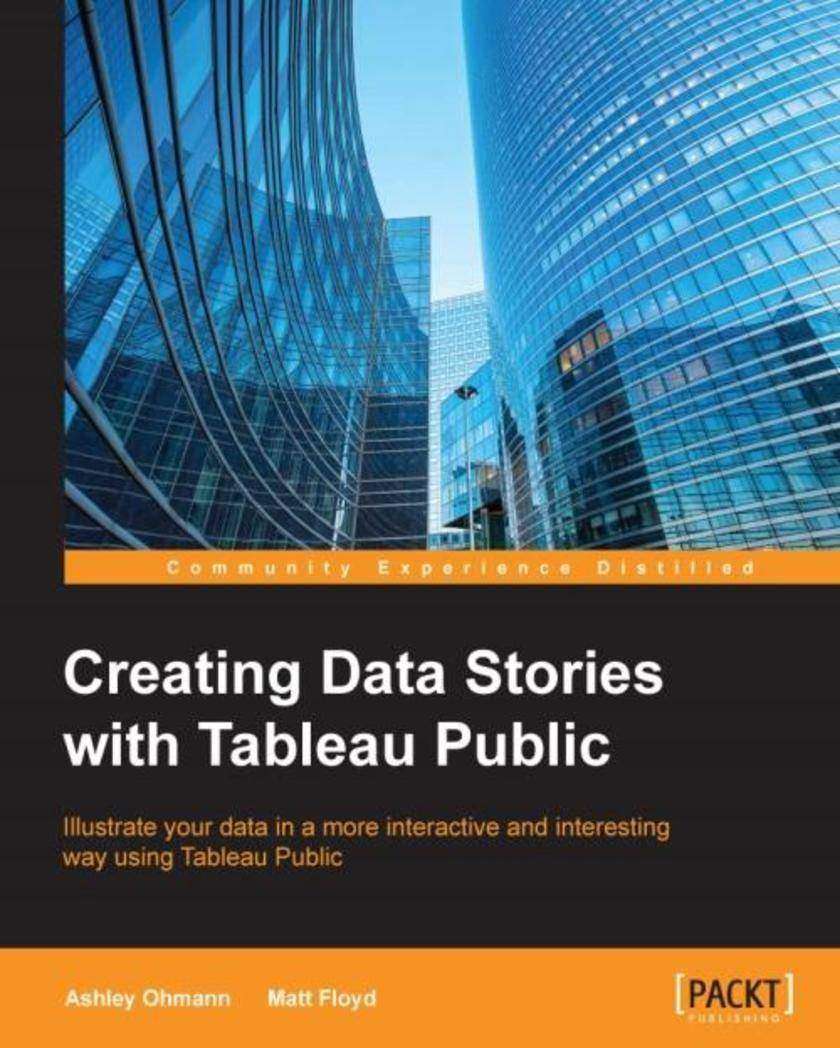
Creating Data Stories with Tableau Public
¥63.21
Illustrate your data in a more interactive and interesting way using Tableau Public About This Book Learn the basics of creating visualizations with Tableau using this concise reference book Understand how to join and aggregate your data sources using Tableau It is a step by step guide that uses examples to help you understand the key concepts and feature of Tableau Public Who This Book Is For This book is targeted at investigative journalists and bloggers with an interest in making rich and interactive data visualizations. Intermediate Tableau Public users and organizations can also use this book as a reference guide and teaching aid. Members of the media team, such as data specialists, web developers, editors, producers, and managers can also benefit from an understanding of the structure and challenges of writing an interactive and interesting data visualization using Tableau Public. What You Will Learn Connect to various data sources and understand what data is appropriate for Tableau Public Understand chart types and when to use specific chart types with different types of data Join and aggregate data for use in Tableau Public data stories Discover features of Tableau Public, from basic to advanced Involve calculations in Tableau Public Build geographic maps to bring context to data Create dashboards from one or more separate data visualizations Create filters and actions to allow greater interactivity to Tableau Public visualizations and dashboards Publish and embed Tableau visualizations and dashboards in articles In Detail Tableau Public is a very useful tool in anyone's data reporting toolbox that allows authors to add an interactive data element to any article. It allows investigative journalists and bloggers to tell a “data story”, allowing others to explore your data visualization. The relative ease of Tableau Public visualization creation allows data stories to be developed rapidly. It allows readers to explore data associations in multiple-sourced public data, and uses state-of-the-art dashboard and chart graphics to immerse the users in an interactive experience. This book offers investigative journalists, bloggers, and other data story tellers a rich discussion of visualization creation topics, features, and functions. This book allows data story tellers to quickly gain confidence in understanding and expanding their visualization-creation knowledge, and allows them to quickly create interesting, interactive data visualizations to bring a richness and vibrancy to complex articles. The book takes you from basic concepts in visualization creation, like connecting to data sources, cleansing data, chart types, common functions, map creation, and publishing to the Web, to more advanced functions. It is a great overview and reference guide for beginner to intermediate Tableau Public data story tellers, and covers creation of Tableau Public visualizations of varying complexities. Style and approach This book is a crisp, systematic, and tutorial-styled guide to building interactive Tableau visualizations.
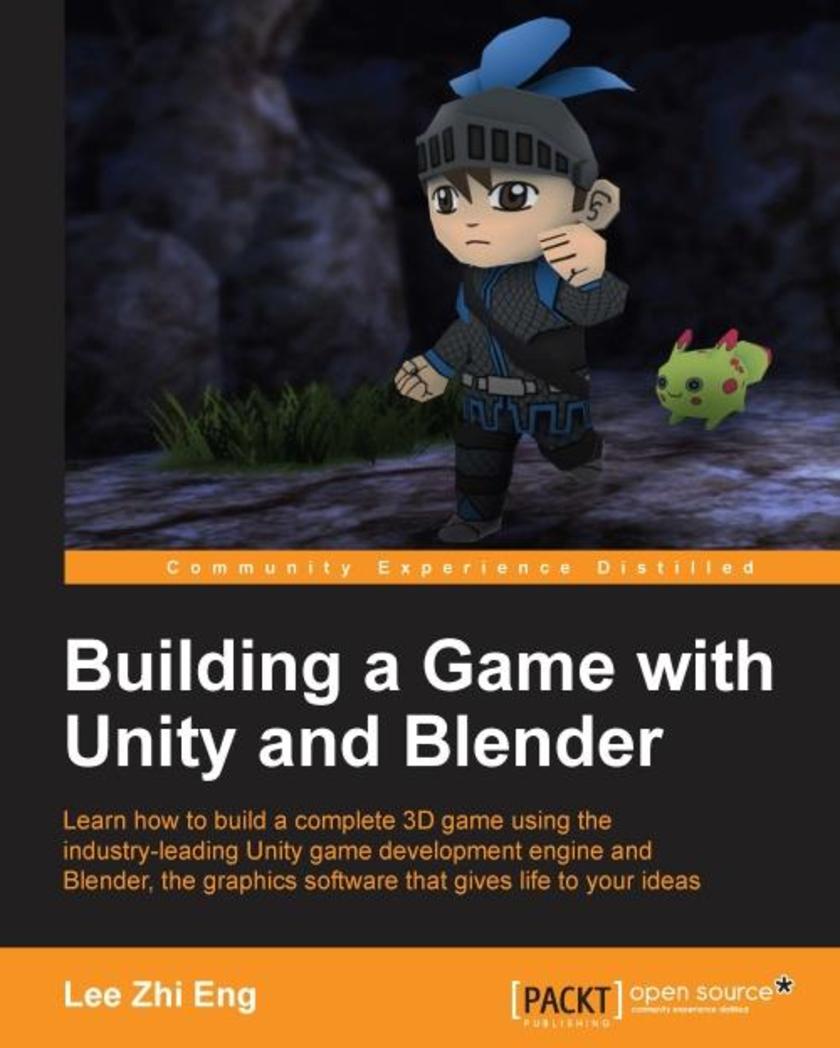
Building a Game with Unity and Blender
¥80.65
Learn how to build a complete 3D game using the industry-leading Unity game development engine and Blender, the graphics software that gives life to your ideas About This Book Learn the fundamentals of two powerful tools and put the concepts into practice Find out how to designand buildall the core elements required for a great game - from characters to environments, to props— Learn how to integrate Artificial Intelligence (AI) into your game for sophisticated and engaging gameplay Who This Book Is For This book has been created for anyone who wants to learn how to develop their own game using Blender and Unity, both of which are freely available, yet very popular and powerful, tools. Not only will you be able to master the tools, but you will also learn the entire process of creating a game from the ground up. What You Will Learn Design and create a game concept that will determine how your game will look and how it will be played Construct 3D models of your game characters and create animations for them before importing them into the game Build the game environment from scratch by constructing the terrain and props, and eventually put it all together to form a scene Import and integrate game assets created in Blender into Unity—for example, setting up textures, materials, animation states, and prefabs Develop game structures including a game flow, user interface diagram, game logic, and a state machine Make the game characters move around and perform certain actions either through player inputs or fully controlled by artificial intelligence Create particles and visual effects to enhance the overall visual aesthetic Deploy the game for various types of platforms In Detail In the wake of the indie game development scene, game development tools are no longer luxury items costing up to millions of dollars but are now affordable by smaller teams or even individual developers. Among these cutting-edge applications, Blender and Unity stand out from the crowd as a powerful combination that allows small-to-no budget indie developers or hobbyists alike to develop games that they have always dreamt of creating. Starting from the beginning, this book will cover designing the game concept, constructing the gameplay, creating the characters and environment, implementing game logic and basic artificial intelligence, and finally deploying the game for others to play. By sequentially working through the steps in each chapter, you will quickly master the skills required to develop your dream game from scratch. Style and approach A step-by-step approach with tons of screenshots and sample code for readers to follow and learn from. Each topic is explained sequentially and placed in context so that readers can get a better understanding of every step in the process of creating a fully functional game.

Arduino for Secret Agents
¥54.49
Transform your tiny Arduino device into a secret agent gadget to build a range of espionage projects with this practical guide for hackers About This Book Discover the limitless possibilities of the tiny Arduino and build your own secret agent projects From a fingerprint sensor to a GPS Tracker and even a robot– learn how to get more from your Arduino Build nine secret agent projects using the power and simplicity of the Arduino platform Who This Book Is For This book is for Arduino programmers with intermediate experience of developing projects, and who want to extend their knowledge by building projects for secret agents. It would also be great for other programmers who are interested in learning about electronics and programming on the Arduino platform. What You Will Learn Get to know the full range of Arduino features so you can be creative through practical projects Discover how to create a simple alarm system and a fingerprint sensor Find out how to transform your Arduino into a GPS tracker Use the Arduino to monitor top secret data Build a complete spy robot! Build a set of other spy projects such as Cloud Camera and Microphone System In Detail Q might have Bond’s gadgets– but he doesn’t have an Arduino (not yet at least). Find out how the tiny Arduino microcomputer can be used to build an impressive range of neat secret agent projects that can help you go undercover and get to grips with the cutting-edge of the world of espionage with this book, created for ardent Arduino fans and anyone new to the powerful device. Each chapter shows you how to construct a different secret agent gadget, helping you to unlock the full potential of your Arduino and make sure you have a solution for every tricky spying situation. You’ll find out how to build everything from an alarm system to a fingerprint sensor, each project demonstrating a new feature of Arduino, so you can build your expertise as you complete each project. Learn how to open a lock with a text message, monitor top secret data remotely, and even create your own Arduino Spy Robot, Spy Microphone System, and Cloud Spy Camera This book isn’t simply an instruction manual – it helps you put your knowledge into action so you can build every single project to completion. Style and approach This practical reference guide shows you how to build various projects with step-by-step explanations on each project, starting with the assembly of the hardware, followed by basics tests of all those hardware components and finally developing project on the hardware.
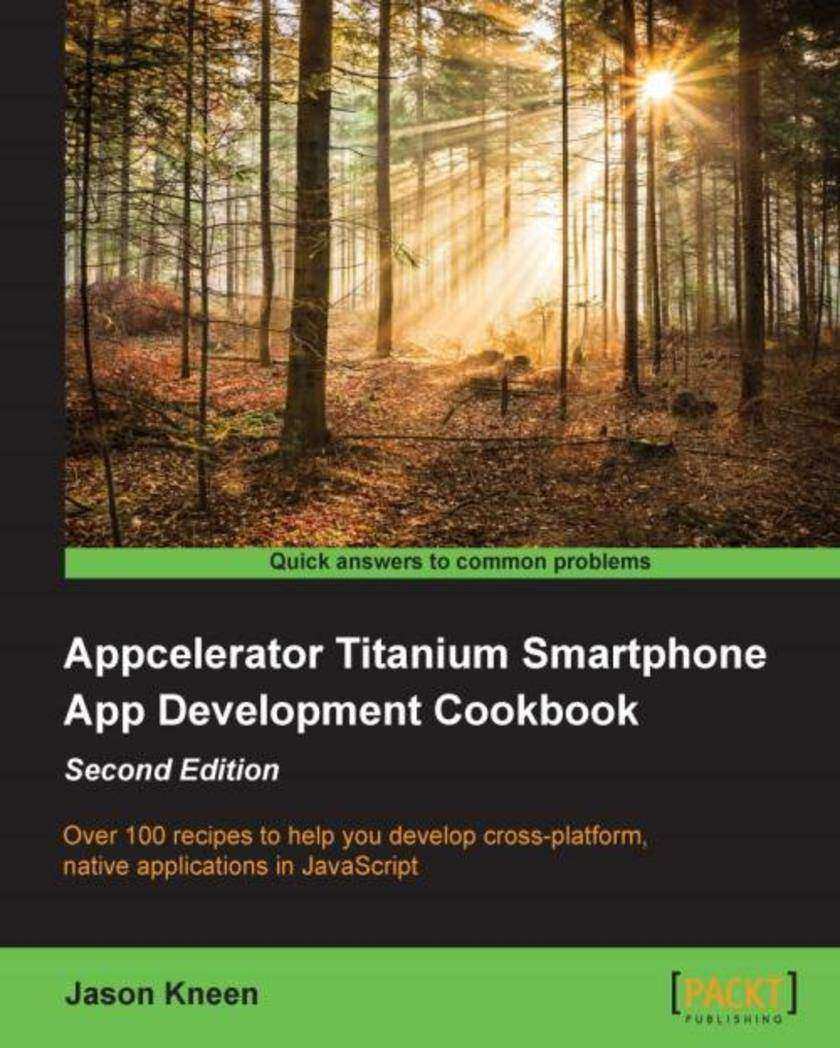
Appcelerator Titanium Smartphone App Development Cookbook - Second Edition
¥80.65
Over 100 recipes to help you develop cross-platform, native applications in JavaScript About This Book Leverage your JavaScript skills to write mobile applications using Titanium Studio tools with the native advantage Deploy your application on the App Store and Google Play Add your own IOS native modules in objective-C, in an easy-to-follow step-by-step format Who This Book Is For This book is an essential for any developer learning or using JavaScript who wants to write native UI applications for iOS and Android. No knowledge of Objective-C, Swift and Java is required and you’ll quickly be developing native, cross-platform apps, in JavaScript! What You Will Learn Transfer data between applications with URL schemes, and make your application accessible to other mobile applications and services Connect with remote services using JSON Work with Google Maps and Apple Maps, GPS and annotate routes Create animations and special effects Integrate notifications and connect with social media services such as Facebook and Twitter Build applications with Alloy MVC – a rapid application development framework Design native APIs and use local databases In Detail The mobile web has paved the way but many users want to have “native” applications installed. Using Appcelerator as a platform it’s now possible to write iOS, Android, and Windows phone applications in JavaScript! It allows developers to develop fully native UI applications using Appcelerator studio tools without any knowledge of Objective-C, Swift or Java. This book will take you through the process of building cross-platform, native UI applications for the mobile from scratch. You will learn how to develop apps, how to use GPS, cameras and photos and how to build socially connected apps. You will also learn how to package them for submission to the App Store and Google Play. This cookbook takes a pragmatic approach to creating applications in JavaScript from putting together basic UIs, to handling events and implementation of third party services such as Twitter, Facebook and Push notifications. The book shows you how to integrate datasources and server APIs, and how to use local databases. The topics covered will guide you to use Appcelerator Studio tools for all the mobile features such as Geolocation, Accelerometer, animation and more. You’ll also learn about Alloy, the Appcelerator MVC framework for rapid app development, and how to transfer data between applications using URLSchemes, enabling other developers to access and launch specific parts of your app. Finally, you will learn how to register developer accounts and publish your very own applications on the App Store and Google Play. Style and approach This book offers a set of practical recipes with a step-by-step approach for building native applications for both the iOS and Android using JavaScript. This hands-on guide shows you exactly how to use the Appcelerator platform to rapidly develop cross-platform, native apps.




 购物车
购物车 个人中心
个人中心



